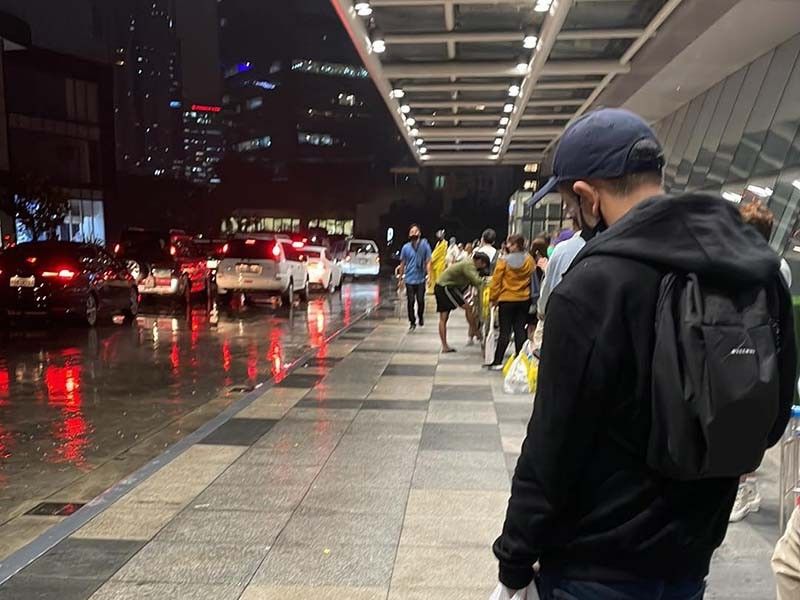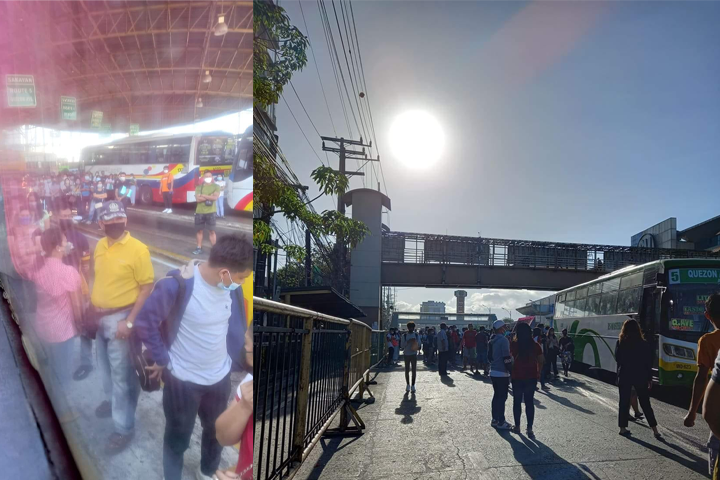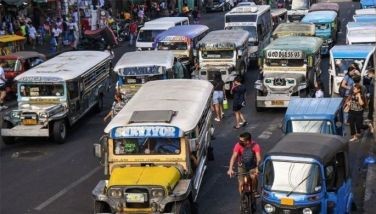Summer rains highlight transport problems unaddressed during pandemic

MANILA, Philippines — It took 30 minutes for project representative John Michael Rodriguez to get from his home in North Caloocan to his workplace on Quezon Avenue in Quezon City.
He was one of the lucky ones. It wasn't a long commute, he said, but it quickly became undignified once the rain started falling. Photos of the situation along Commonwealth Avenue — a major route for most workers in Quezon City — flooded social media on Monday and Tuesday showing commuters stranded in the rain while waiting for a ride.
"It was hard because [had no choice but ]to get wet in the rain. It was hard to get a ride," he told Philstar.com in Filipino in an online exchange Wednesday morning. He got to his destination on time but described lining up in the rain as an unnecessary hassle for workers who could have worked from home.
"For me, it's still really lacking, and they should still increase it because almost everyone is already going back to work. Before workers are made to go back to their offices, the government should make sure that there are enough public transparent vehicles for commuters. You'll give up if this is what you're going through every day."
It's the same story over and over again. Whether by rainfall or the coronavirus-induced community quarantines, it didn't take much to trigger the same scenes: the long lines at public transportation hubs and extreme congestion on major thoroughfares.

"It was simply raining but public transportation in Taguig broke down immediately. My trip which was usually 45 minutes to work became 1 hour and 45 minutes," one Twitter user wrote.
In a statement issued Tuesday night, the Land Transportation Franchising and Regulatory Board apologized to passengers at the LITEX to Sandiganbayan and other areas along Commonwealth.
According to the initial investigation conducted by the agency, of the 510 buses plying Route 5, or the Angat to Quezon Avenue via the Commonwealth route, less than 50% of the units were operating that morning, leading to many passengers being unloaded.
The LTFRB said it is still investigating the said incident to hold the operator of the said route, the United Mega Manila Bus Consortium, Inc. accountable.
The agency added that it would be reopening routes and operating additional units to address the grievances of riders and the shortage of public transportation in the areas covering the routes. These include:
- Modern Public Utility Jeepney: 6 routes with 158 units
- Traditional Public Utility Jeepney: 76 routes with 4,135 units
- Modern UV Express Service: 1 route with 19 units
- Traditional UV Express Service: 20 routes with 2,783 units
Grabe. Walang pusong pinabayaan ang mga commuter. pic.twitter.com/tfvQsmQlFq
— #NoToPAREX Two-wheeled Terror ????????????????????? (@goodkidbikecity) April 4, 2022
Separate studies by the Japan International Cooperation Agency have shown that only 12% of households in Metro Manila have access to a private car, while the remaining 8 out of 10 total daily trips rely on public transportation.
But transport advocates said that the breakdown of public transportation because of light rains could not be simply solved by augmenting capacity with more routes and units.
According to Primo Morillo, convenor of commuter advocacy group The Passenger Forum, the situation is bound to stay the same until changes in infrastructure and policy are made to better serve commuters.
"This only exposes infrastructure that isn't commuter-friendly...The rain only worsened it because there isn't an infrastructure for commuters. We don't have waiting areas...you're just waiting on the sidewalk," he told Philstar.com in a phone call.
'Non-commuters making decisions'
Morillo blamed the "shock" from the rain coupled with the lack of infrastructure and public transport capacity with the surge of commuters out for on-site work. He also pointed to "haphazard decisions" from transportation officials that were "obviously made by non-commuters," including the jeepney modernization and the no vaccine, no ride policy from earlier this year.
"Even before the pandemic, we've been saying we're lacking in ride options. The connection between routes and modes wasn't clear, and there are still areas that aren't sufficiently served...we're really expecting it will get worse. Halos agua de Mayo pa lang ito," he said.
"Imagine the shock that will be absorbed by the commuting public if we don't solve this problem right now while it's still relatively light when teachers and students are still at home."
Before the coronavirus pandemic, transport and worker groups had already been warning of a public transportation crisis, saying the government's public transport capacity was nowhere near enough to service the commuting public.
As workers troop back to on-site work, Morillo said that the long lines supposedly caused by the summer rains were only a symptom of the same crisis that was still around and unaddressed.
"It is a crisis. Nothing changed in the sense that the crisis was not addressed. But on the other hand, something did change, because it got worse. Because we went through the pandemic, and more people were forced to buy cars," he said.
"Right now, we're paying for all our mistakes. If we don't use the last few months of the Duterte administration, the next president will have to carry the load."
- Latest
- Trending





























